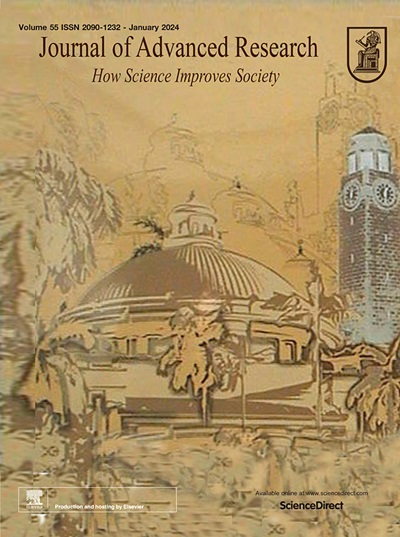Trained immunity using probiotics and inactivated pathogens enhances resistance to Salmonella enterica serovar Typhimurium infection by activating the cGAS-STING signal pathway in mice and chickens
IF 11.4
1区 综合性期刊
Q1 MULTIDISCIPLINARY SCIENCES
引用次数: 0
Abstract
Introduction
Concerns about antibiotic resistance have prompted interest in alternative strategies for enhancing disease resistance, particularly in livestock and poultry production.Objectives
This study explored the role of trained immunity in enhancing resistance to Salmonella enterica serovar Typhimurium (S. Typhimurium) infection in mice and chickens.Methods
We investigated the effects of probiotics and inactivated pathogenic bacterial strains on host immunity in Toll-like receptor 2-deficient mice (TLR2−/−) to assess whether these effects were related to bacterial outer membrane components such as peptidoglycan (PNG), lipoarabinomannan (LAM) and lipoteichoic acid (LTA). Bacterial genomes were evaluated for their ability to enhance the host immune system. Macrophage-depletion models were used to identify the key immune cells involved in trained immunity, with a focus on the cGAS-STING pathway.Results
Probiotics and inactivated pathogenic strains enhanced host immunity and protected against S. Typhimurium infection. As demonstrated in the TLR2-deficient mice, the effects were not dependent on bacterial outer membrane components. Instead, bacterial genomes played a significant role in activating trained immunity. Macrophages were identified as the primary cells that mediated the response with the cGAS-STING pathway playing a crucial role. The results observed using the mouse models led to investigating the potential application of trained immunity in poultry.Conclusion
Trained immunity activated by probiotics and inactivated bacterial pathogens enhanced resistance against S. Typhimurium infection via macrophage activation and involved the cGAS-STING pathway. These findings highlight the potential of trained immunity as an alternative strategy for disease prevention in both livestock and poultry.

求助全文
约1分钟内获得全文
求助全文
来源期刊

Journal of Advanced Research
Multidisciplinary-Multidisciplinary
CiteScore
21.60
自引率
0.90%
发文量
280
审稿时长
12 weeks
期刊介绍:
Journal of Advanced Research (J. Adv. Res.) is an applied/natural sciences, peer-reviewed journal that focuses on interdisciplinary research. The journal aims to contribute to applied research and knowledge worldwide through the publication of original and high-quality research articles in the fields of Medicine, Pharmaceutical Sciences, Dentistry, Physical Therapy, Veterinary Medicine, and Basic and Biological Sciences.
The following abstracting and indexing services cover the Journal of Advanced Research: PubMed/Medline, Essential Science Indicators, Web of Science, Scopus, PubMed Central, PubMed, Science Citation Index Expanded, Directory of Open Access Journals (DOAJ), and INSPEC.
 求助内容:
求助内容: 应助结果提醒方式:
应助结果提醒方式:


